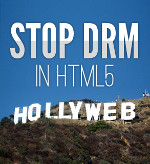In a significant development, which drastically changes the terrain of the renewed nuclear power and waste isolation the Department of Energy has withdrawn its license application with the Nuclear Regulatory Commission. This effectively ends the project and begs the question: what, where, when, who and most importantly, why now?
Let's remind ourselves of the basics of how we generate electrical power from uranium. The basic principle is that since uranium decays radioactively -- it's "hot" -- the energy given off by the components of the decaying nuclei can be used to heat water into steam. That steam is then used to drive a turbine, which is connected to a electrical generator.
So let's look at the life cycle of a chunk of uranium. In the previous post, February 19, 2010, we discussed how uranium is isolated from dirt and rock in naturally occurring deposits called
uraninite or, commonly,
pitchblende. After processing the ore to
natural uranium, chemical and/or mechanical processing is needed to purify or enrich the material to isolate the desirable component
235U. (You might recall the role of warehouse-sized fields of centrifuges.) Keep in mind that, when determining the economic feasibility of nuclear power, we need to take into account the cost of all the stages of production, consumption, and isolation of the radioactive material.
Now, once we've isolated the
235U (read "U-235" or "235-U," either way) to low-enriched (anywhere from 4% to 20%) we can think about putting this "hot," radioactive material into a reactor and use it to make electricity to run our mechanized world. The form in which the enriched uranium goes in to the reactor is as
nuclear fuel, often shaped in cylinders (which themselves are comprised of fuel pellets) commonly referred to as
rods. The rods are placed into the reactor core, in various configurations depending on the reactor, and water under pressure is circulated throughout the chamber, called the
reactor core, which removes the heat of the nuclear reaction. There's no mixing of the nuclear fuel with water.
After a period of time, typically on the order of weeks or months, the nuclear fuel is "spent" in the process of the decay of the
235 nuclei which comprise the material. (We'll talk about the quantum mechanics of the process of radioactive decay in the next entry. Promise.) Spent nuclear fuel is also known as waste. Waste is an interesting concept that humans have come up with stuff that we've stopped thinking about. But if you stop thinking about this waste, you're going to get into some trouble.
Dealing with the spent nuclear fuel is -- by far -- the most costly part of generating electricity from radioactive materials. You can't throw it away. It must be
isolated. This is where the Yucca Mountain waste repository project came into play. The problem is that the spent nuclear fuel is still hot, literally. While the fuel is "spent" as far as the reactor engineer is concerned (because it has become contaminated with the products of the radioactive element and its activity has fallen below design specification) it's ain't so for us. This stuff is nasty. Still radioactive and toxic to boot. And it remains active for a long time.
So the question is what do you do with it so that it's isolated from flora and fauna (include people in this category, why not?) and doesn't do all the bad things that radiation poisoning can do. (Another topic for a future entry!)
There have been a lot of ideas on how to isolate spent nuclear fuel. All of them are ludicrous. Most of them are economically unfeasible. "Send it to 'outer' space."Or 'the moon.' Forget about giving it to NASA. It's too expensive and what if the Challenger had been loaded up with this junk?
The only idea that's considered feasible economically is burial. Stick it into the ground in a deep hole. And hope. I say "considered" feasible because it's not -- really.
The first problem is the cost of building, storing, maintaining, monitoring, and preventing accidental release of the spent material. If anything goes wrong on a large scale -- water contamination, fire, earthquake, etc. -- we're up you-know-where without a you-know-what. You can't easily "handle" this stuff, after all.
Yucca Mountain
was selected by Congress[!!], not by scientific process of elimination, but for overtly political considerations. They said "it's dry enough." Turns out it's not. If water gets near this stuff, usually held in metal barrels the show is over.
More later about the details of the actual storage of spent nuclear fuel.


